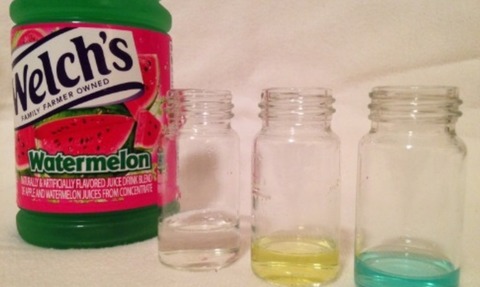Purifying colour additives using automated SPE
1 Oct 2014

Experts at Horizon Technology, Avantor Performance Materials B.V. and the University of Wisconsin-Madison, US have shown how to efficiently isolate and purify colours used in food, drug and cosmetic (FDC) products using automated solid phase extraction (SPE) and a portable spectrometer.
The United States Food & Drug Administration (FDA) regulates the approval of colour additives for their safe use in foods, cosmetics, pharmaceuticals and medical devices.
Moreover, the Federal FDC Act contains provisions for what colour additives are required to be certified. These provisions are monitored by the FDA, and through the Code of Federal Regulations (CFR), the FDA releases information on new colour additives and new uses for certified colour additives.
The addition of FDC colours to beverages is designed to create a more visually appealing sport drink or juice that can impart specific flavours to match the colour, for example.
Many sport and juice beverages use the FDC Blue No. 1 and FDC Yellow No. 5 in different concentrations to create various hues of green associated with the lime, watermelon, and tropical flavours.
This application note shows how to efficiently isolate and purify FDC Blue No. 1 and FDC Yellow No. 5 in sport drinks and juices with simple SPE automation using the SmartPrep Extractor, with the purpose of confirmation of FDC colour presence through qualitative analysis using a portable spectrometer.
Solid Phase Extraction
According to research, separation of the FDC colours present in Welch’s Watermelon flavoured juice drink and Gatorade FROST RAIN LIME sports beverage was accomplished with automated SPE using the SmartPrep extractor from Horizon Technology.
Samples were loaded onto SPE cartridges to separate the FDC colours by polarity using a 25% methanol solution and 100% methanol.
The amount of sample loaded was dependent on the amount of FDC Blue No. 1 and FDC Yellow No. 5 within each beverage sample, which was an unknown.
The SPE methods collected the load step to verify there was no colour breakthrough as each colour was eluted from the C18 cartridge.
Spectrophotometric Analysis
Collected fractions of each sample were manually read with a portable Vernier LabQuest spectrometer. Samples fractions were compared to diluted samples of McCormick FDC Yellow No. 5 and FDC Blue No. 1 (diluted in the same solvent concentration as the collected fractions).
Results
All samples and diluted FDC colours were read across a range of wavelengths to generate a spectra from 380 nm - 950 nm.
Collected fraction spectra were overlaid with the diluted corresponding FDC spectra for qualitative comparison at the wavelength with the maximum absorbance.
FDC Yellow No. 5 has a maximum absorbance of 426 nm, and FDC Blue No. 1 has a maximum absorbance of 589 nm.
The process of using SPE allowed for individual fractions to be collected for each sample. Measured sample fractions confirmed the absence of FDC Yellow No. 5 in the first fraction collected during the SPE load step.
The researchers said that this indicated there was adequate retention of the yellow colour on the 500 mg C18 cartridge.
Using automated SPE as an isolation technique was capable of accurately purifying FDC Yellow No. 5 and FD&C Blue No. 1, confirmed by having no absorbance of FDC Blue No. 1 in fraction two and no absorbance of FDC Yellow No. 5 in fraction three of either beverage sample.
Additional FDC colors could implement this same automated SPE purification principle, allowing efficient qualitative and routine analysis of banned or hazardous dyes present in foods, beverages and spices.
This article is based on work published by Toni Hofhine - Horizon Technology, Pamela Doolittle - University of Wisconsin-Madison and Ivana Ivanovic - Avantor Performance Materials B.V.
For a full account of the study, including all experimental materials and results analysis, please follow the PDF link below.

